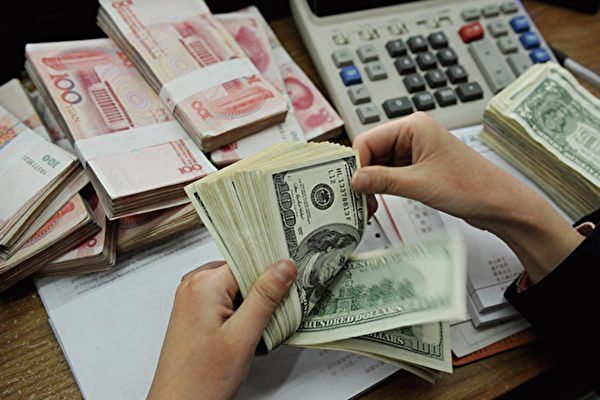As the Chinese yuan continues to weaken, both Chinese citizens and businesses are finding ways to avoid their own currency.
Since 2014, the US dollar has been strengthening against the yuan. In 2014, the exchange rate was 6.1 yuan to 1 USD. Breaking the 7 yuan mark is psychologically significant, and the Chinese Communist government is hoping to avoid such a scenario. However, over the past year, the USD to yuan rate has consistently remained above 7.
The advantage of the yuan depreciation is that exports become cheaper. Now, 1 USD can be exchanged for more yuan, making goods priced in yuan more attractive to Americans. However, the challenge lies in the fact that Chinese imports must be paid for in USD, which includes almost all goods and energy sources.
Thus, the weakening yuan is causing costs to increase for Chinese factories in purchasing raw materials and providing power for machinery.
Exporters and other businessmen are trying to hold cash other than yuan, only exchanging for the currency they need. They are bearish on the yuan for two main reasons. Firstly, the Chinese economy has not shown signs of rapid recovery, with slight improvements in indicators over the past month and a slight uptick in factory activity, but this is not a trend. A slight recovery in manufacturing alone is not enough to create job opportunities for millions of unemployed youth.
In March of this year, Chinese exports dropped by 7.5% compared to the same period last year, which is bad news for the Chinese economy and even worse for those looking to unload yuan, as exports are a major avenue to acquire USD. Additionally, despite borrowing costs being as low as 1.5%, Chinese companies have expressed difficulties in obtaining enough returns to cover interest payments.
Another reason for the dim hopes of yuan recovery stems from the consistently high USD exchange rate and the likelihood of it remaining high in the foreseeable future. When US interest rates are high, as has been the case for the past year, the USD tends to appreciate. With investing in the US becoming more lucrative, capital typically flows out of China and other countries. Chinese investors can deposit USD in the US and earn a 5% interest rate. However, if they convert money to yuan and deposit it in Chinese banks, they can only earn a 1.5% interest rate.
Capital outflow from China and other countries flowing into the US is causing depreciation of the yuan and other currencies, while the USD keeps strengthening. If interest rates were to decrease, the USD might depreciate. However, given the ongoing inflation in the US, a rate cut by the Federal Reserve is unlikely. Consequently, prudent capital investments are shifting from yuan to USD or gold.
The People’s Bank of China has increased its gold purchases, and Chinese citizens are also starting to buy jewelry with cash to avoid holding depreciating yuan. Gold is also seen as an alternative to the Chinese stock market; over the past three years, the market value has evaporated by about $6 trillion USD. The central bank has been increasing gold reserves for 17 consecutive months, and the increasing demand has led to record high gold prices. The rising gold prices pose a mixed blessing for Chinese banks and investors, as they have to use depreciating yuan to buy surging gold prices.
Not only are Chinese individuals and exporters reluctant to hold yuan, but the rest of the world is also wary. The yuan’s share as a global reserve currency has dropped to its lowest point in three years. After reaching a high of 2.83% in 2020, the proportion of yuan held by global central banks steadily decreased to 2.29% by the end of 2023, with the USD remaining the preferred reserve currency. Furthermore, despite the People’s Bank of China purchasing gold every month for the past 17 months, the ratio of gold to USD in its foreign exchange reserves has not changed.
In 2016, the yuan was included in the International Monetary Fund’s Special Drawing Rights (SDR) currency basket. Xi Jinping believed that this was an important step towards internationalizing the yuan and replacing the USD as the world’s dominant currency. Eight years later, the yuan has yet to become a major reserve currency, with its share in trade settlements only reaching 4.6%.
There is still a long way to go for the yuan to replace the USD, with the first step being Chinese exporters holding yuan, which they are currently reluctant to do.

